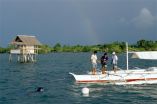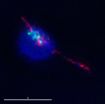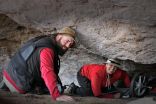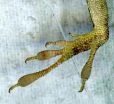Gene identified for immune system reset after infection
Finding could help antibiotics and auto-immune disorders
2014-10-23
(Press-News.org) DURHAM, N.C. -- When pathogenic bacteria like Salmonella or Staphylococcus invade a host, the host organism should respond by going into a state of high alert, altering its metabolism to defend against the attack.
But if the host doesn't reverse course once the battle is won, its efforts will be wasted on defense rather than on repairing the damage done by bacterial invaders.
Duke University researchers have uncovered the genes that are normally activated during recovery from bacterial infection. The finding could lead to ways to jumpstart this recovery process and possibly fend off autoimmune diseases and chronic inflammatory disorders that can result from the body staying in attack mode for too long.
The study appears Oct. 23, 2014 in PLOS Genetics.
"While the steps involved in recognizing microbial pathogens and inducing the immune response have been extensively studied, the pathways involved in host recovery after an infection are not well understood," said Alejandro Aballay, Ph.D., an associate professor of molecular genetics and microbiology at Duke University School of Medicine.
To examine the biological changes associated with this transition from wartime to peacetime, Aballay and lead study author Brian Heard, PhD, a postdoctoral fellow in his lab, infected the worm C. elegans with the common bacterial pathogen Salmonella enterica.
The researchers used gene chip technology to identify genes in the worm that were "turned off" or "turned on" during that initial infection. Then they treated the worm with the antibiotic tetracycline and looked to see what genes were dampened or activated as the organism recovered from infection.
They discovered that as the infection resolves, genes involved with stimulating the immune response were turned off, while genes involved in returning to business as usual -- a process known as "cellular homeostasis" – were turned on. These recovery genes play important roles in repairing tissue damage, eliminating bacterial toxins and clearing the cellular fighters that could cause excessive inflammation and further harm tissues.
When the researchers looked closer at the genes involved in recovery, they discovered many were controlled by the ELT-2 transcription factor, a type of master switch that had already been shown to regulate when and where immune response genes were expressed. The researchers showed that shutting down this master switch prevented infected animals from recovering with antibiotic treatment, showing that ELT-2 functions not only in defense but also in recovery.
"Our studies indicate that host or bacterial signals during the initial decline in infection may shift ELT-2's duties from priming the innate immune to protecting against chemical insults," Aballay said. "This opens a number of possibilities for further research."
Aballay says a number of studies in C. elegans have shown that the worm's nervous system, which can respond rapidly to all sorts of environmental stimuli, is ultimately responsible for activating the immune system in response to bacterial infection. So now he plans to conduct experiments in the worm to determine whether the nervous system also controls the recovery after infections have been cleared.
INFORMATION:
The research was supported by the National Institutes of Health (RO1 grant GM070977-10 and postdoctoral fellowship F32GM103122-01).
CITATION: "Recovery from an Acute Infection in C. elegans Requires the GATA Transcription Factor ELT-2," Brian Head and Alejandro Aballay. PLOS Genetics, Oct. 23, 2014. DOI: 10.1371/journal.pgen.1004609
[Attachments] See images for this press release:
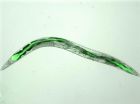
ELSE PRESS RELEASES FROM THIS DATE:
2014-10-23
Over the last decade, powerful new microscopes have dramatically sharpened biologists' focus on the molecules that animate and propel life. Now, a new imaging platform developed by Eric Betzig and colleagues at the Howard Hughes Medical Institute's Janelia Research Campus offers another leap forward for light microscopy. The new technology collects high-resolution images rapidly and minimizes damage to cells, meaning it can image the three-dimensional activity of molecules, cells, and embryos in fine detail over longer periods than was previously possible.
The developers ...
2014-10-23
To protect our oceans from irreversible harm, governments, conservationists, and researchers around the world must address the enormous threat posed by unregulated and destructive fisheries, say top marine scientists.
In an article published today in Science, Prof. Amanda Vincent of Project Seahorse at the University of British Columbia and Dr. Jean M. Harris of Ezemvelo KZN Wildlife in South Africa call for bold new approaches to the pressing global issue of overfishing and habitat destruction, including networks of marine protected areas, co-ordinated governance, and ...
2014-10-23
This news release is available in German. Viral infections always follow a similar course. The pathogen infiltrates the host cells and uses their replication and protein production machinery to multiply. The virus has to overcome the initial barrier by docking on the surface of the cell membrane. The cell engulfs the virus in a bubble and transports it towards the cell nucleus. During this journey, the solution inside the bubble becomes increasingly acidic. The acidic pH value is ultimately what causes the virus's outer shell to melt into the membrane of the bubble.
Capsid ...
2014-10-23
A DNA mutation that can lead to horses being genetically male, but female in appearance, may explain at least two cases of controversial sexual identity, according to research led by professors from the Texas A&M College of Veterinary Medicine & Biomedical Sciences (CVM) and published in PLOS Genetics.
This type of genetic abnormality is caused by a mutation called DNA copy number variation (CNV), in which there are deletions and duplications in the genome typically larger than 50 base pairs.
These variations are one way that individuals of the same species are genetically ...
2014-10-23
Kansas City, MO. — The development of a new organism from the joining of two single cells is a carefully orchestrated endeavor. But even before sperm meets egg, an equally elaborate set of choreographed steps must occur to ensure successful sexual reproduction. Those steps, known as reproductive cell division or meiosis, split the original number of chromosomes in half so that offspring will inherit half their genetic material from one parent and half from the other.
During meiosis, each set of homologous chromosomes pair up in a kind of chromosomal square dance, ...
2014-10-23
An international team of researchers from Japan and the UK has discovered how a single protein, called PP4, oversees the processing of DNA during sperm and egg generation for successful fertilization. This protein's activity becomes even more paramount during aging. The study, published in the journal PLOS Genetics, may one day help scientists to understand the mechanisms underlying age-related fertility declines in humans.
While a typical adult human cell contains 46 DNA strands, or chromosomes, that carry our complete genetic information, reproductive cells such as ...
2014-10-23
Research conducted at the highest-altitude Pleistocene archaeological sites yet identified in the world sheds new light on the capacity of humans to survive in extreme environments.
The findings, to be published in the Oct. 24 edition of the academic journal Science – co-authored by a team of researchers including University of Calgary archaeologist Sonia Zarrillo – were taken from sites in the Pucuncho Basin, located in the Southern Peruvian Andes.
The primary site, Cuncaicha is a rock shelter at 4,480 metres above sea level, with a stone-tool workshop ...
2014-10-23
Scientists working on islands in Florida have documented the rapid evolution of a native lizard species — in as little as 15 years — as a result of pressure from an invading lizard species, introduced from Cuba.
After contact with the invasive species, the native lizards began perching higher in trees, and, generation after generation, their feet evolved to become better at gripping the thinner, smoother branches found higher up.
The change occurred at an astonishing pace: Within a few months, native lizards had begun shifting to higher perches, and over ...
2014-10-23
When a solid material is immersed in a liquid, the liquid immediately next to its surface differs from that of the bulk liquid at the molecular level. This interfacial layer is critical to our understanding of a diverse set of phenomena from biology to materials science. When the solid surface is charged, just like an electrode in a working battery, it can drive further changes in the interfacial liquid. However, elucidating the molecular structure at the solid-liquid interface under these conditions has proven difficult.
Now, for the first time, researchers at the US ...
2014-10-23
Ferns are believed to be 'old' plant species – some of them lived alongside the dinosaurs, over 200 million years ago. However, a group of Andean ferns evolved much more recently: their completely new form and structure (morphology) arose and diversified within the last 2 million years. This novel morphology seems to have been advantageous when colonising the extreme environment of the high Andes.
Dr Patricia Sanchez-Baracaldo (Bristol) and Dr Gavin Thomas (Sheffield) used molecular and morphological data to study a group of ferns which grow in a unique ecosystem ...
LAST 30 PRESS RELEASES:
[Press-News.org] Gene identified for immune system reset after infection
Finding could help antibiotics and auto-immune disorders

